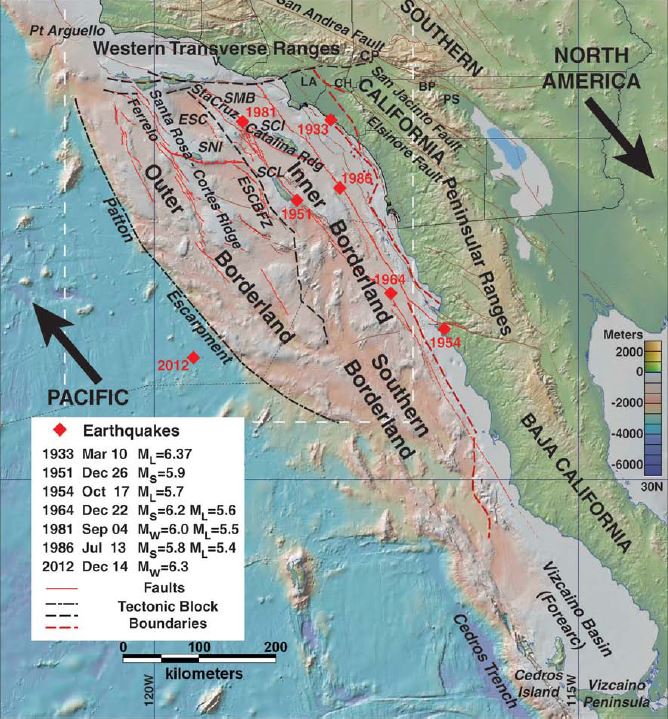
Massive undersea earthquakes off the coast of California could send a tsunami crashing into Los Angeles or San Diego, new research suggests.
As the North American and Pacific tectonic plates grind past each other, large chunks of Earth's crust wedged between them get squeezed and twisted off Southern California and Baja California in Mexico. This logjam of crust could cause catastrophic ruptures at two faults along this boundary, setting off undersea temblors of magnitude 7.9 or 8.0, according to new research published April 25 in the Journal of Geophysical Research: Earth Surface.
"We're dealing with continental collision," Mark Legg, a geologist at Legg Geophysical, a geoexploration and hazard assessment company in Huntington Beach, California, said in a statement. "That's fundamental. That's why we have this mess of a complicated logjam." [In Photos: This Millennium's Most Destructive Earthquakes]
Network of faults
The San Andreas Fault — which snakes about 800 miles (1,300 kilometers) from Mendocino in northern California to the Salton Sea in the southern part of the state — gets most of the attention. But a network of faults also lurks off California's coasts.
These faults have formed because huge chunks of Earth's crust are being smashed and twisted between the North American plate and the Pacific, which is sliding northwest, away from California. This pileup of crust spans from the San Andreas Fault inland to a region between about 90 and 125 miles (150 and 200 km) off the coast. This area of Earth's crust, called the California Continental Borderland, sits partially under the Channel Islands, the most accessible of which are a few hours' boat ride from Santa Barbara, California.
To understand the threat posed by this crustal compression, Legg and his co-authors analyzed older images of the seafloor, data from earthquakes that have occurred in the region, and floor-depth measurements (called "seafloor bathymetry").
Sign up for the Live Science daily newsletter now
Get the world’s most fascinating discoveries delivered straight to your inbox.
The researchers found several troubling issues. Several rifts, ridges and valleys had formed along the Santa Cruz-Catalina Ridge Fault — an indication that the fault was building up seismic stress, they said. In fact, chunks of the California Continental Borderland crust are slipping sideways and being pulled upward — collateral damage from the collision of two continental plates.
Farther offshore, one side of the Ferelo Fault had thrust upward because the Pacific Plate is dragging the wedged chunks of crust northward. Those chunks are then crashing into Transverse Mountain Range, which runs east to west and lies north of Los Angeles.
That seismic stress could lead to a dangerous fault rupture, just like the one likely to hit the San Andreas Fault in the next several decades, the researchers said.
"Such large faults could even have the potential of a magnitude-8 quake," Christopher Sorlien, a geologist at the University of California, Santa Barbara who was not involved in the study, said in a statement.
If those faults were to rupture in certain locations, they could send tsunami waves crashing into Los Angeles or San Diego, the researchers suggested.
Follow Tia Ghose on Twitterand Google+. Follow Live Science @livescience, Facebook & Google+. Originally published on Live Science.

Tia is the managing editor and was previously a senior writer for Live Science. Her work has appeared in Scientific American, Wired.com and other outlets. She holds a master's degree in bioengineering from the University of Washington, a graduate certificate in science writing from UC Santa Cruz and a bachelor's degree in mechanical engineering from the University of Texas at Austin. Tia was part of a team at the Milwaukee Journal Sentinel that published the Empty Cradles series on preterm births, which won multiple awards, including the 2012 Casey Medal for Meritorious Journalism.









